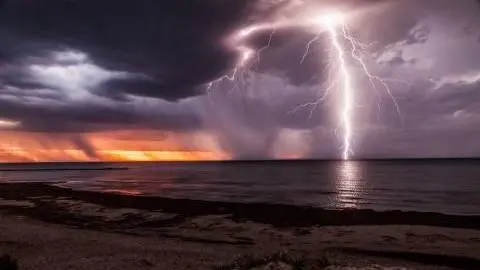ING commodities outlook 2023: Stormy seas ahead
2022 has been an extraordinary year for commodity markets. Supply risks led to increased volatility and elevated prices. However, demand concerns have taken the driving seat as we approach year-end. 2023 is set to be yet another year of uncertainty, with plenty of volatility
Russia’s devastating invasion of Ukraine has been a key driver for commodity prices this year. Russia’s willingness to use energy as a weapon and retaliatory sanctions on Russia from the West have had an impact not just on the commodities complex, but the broader global economy. As a result, what started out as concern over supply has now moved more towards growing demand risks as central banks around the world tighten monetary policy in a bid to rein in rampant inflation. Clearly, the longer and more restrictive policy is from central banks, the more downside there is to demand.
In addition, whilst much of the world has finally moved on from Covid, key commodity consumer, China, continues to follow a zero-Covid policy. While the government eased quarantine restrictions in recent months, China is facing its largest outbreak of Covid since the start of the pandemic, which clearly does not help the demand picture. In addition to the impact of Covid restrictions, the metal-intensive property market in China remains very weak. Up until now, support from the government has had little impact. It is yet to be seen how helpful the latest measures from the government will be.
We will be entering 2023 with markets trying to gauge the demand impact from slowing global growth. It is clear that a number of key economies will enter recession, the big question is how severe. When you couple these concerns with the ongoing weakness in China it is likely that demand will continue to dictate price direction through the early part of 2023. A turning point for the complex would likely be when we see the US Federal Reserve pivoting towards a more accommodative policy (which would also suggest we have seen the peak in the US dollar), but for that to happen, we need to see some clear evidence of a significant fall in inflation.
While demand risks are in the driving seat for now, supply risks have certainly not disappeared. In fact, these risks are growing for 2023, particularly when it comes to energy.
For oil, the global market will need to see a further change in trade flows as the EU ban on Russian crude oil and refined products comes into force. While other buyers will be keen to pick up discounted Russian oil, their ability to do so is likely limited, which suggests that we see Russian oil supply falling over the course of 2023. This coupled with OPEC+ supply cuts suggest a tighter oil market. Therefore, prices should strengthen over the course of the year.
The European natural gas market has seen a massive amount of disruption this year, as Russia cut off the bulk of supply to the region, leading to significant volatility and record-high prices. Demand destruction along with increased LNG imports have helped offset Russian supply losses. For 2023, the EU will likely find it much more difficult to refill storage to adequate levels ahead of the 2023/24 winter. Russian supply losses will be more pronounced and there are limits to how much more LNG Europe can import. Therefore, we will need to see continued demand destruction through 2023. In order to see this demand destruction, prices will have to remain at elevated levels. Tightness in the market also means that volatility is not going to disappear anytime soon.
Metal balances are looking more comfortable for 2023. Supply growth and demand weakness should ensure this. These more comfortable supply and demand balances along with poor sentiment suggest that most metal prices will remain under pressure in the early part of 2023. We are more constructive as the year progresses though on the back of low inventories for a number of metals, expectations that we start to see monetary loosening and a modest recovery from China. Furthermore, there are still clear supply risks for a number of base metals. Up until now, Russian metals have avoided sanctions but clearly, there is always the risk that these are targeted at a later stage. As for gold, the outlook is fairly constructive. We believe that as soon as we see any signs from the US Federal Reserve of a pivot, that this will provide solid support to prices.
Agricultural commodities have also seen significant strength this year, particularly grains, due to the disruption in Ukrainian exports along with poorer weather in a number of key growing regions. These markets are going to remain sensitive to developments in the Russia/Ukraine war. However for now, we believe risks are skewed to the upside. There are some early signs that the winter wheat crop in some key growing regions will be smaller next season, whilst clearly for agri crops in general, yields could suffer due to less application of fertilisers, given the strength in the market this year.
Overall, we believe in the short term that there is further downside for commodity markets. However, as we move towards the middle of the year, and once the worst of the demand worries are behind us, supply concerns are likely to take centre stage once again, which should push prices higher.
This publication has been prepared by ING solely for information purposes irrespective of a particular user's means, financial situation or investment objectives. The information does not constitute investment recommendation, and nor is it investment, legal or tax advice or an offer or solicitation to purchase or sell any financial instrument. Read more
Download
Download article
30 November 2022
2023 Commodities Outlook: Stormy seas ahead This bundle contains 13 Articles